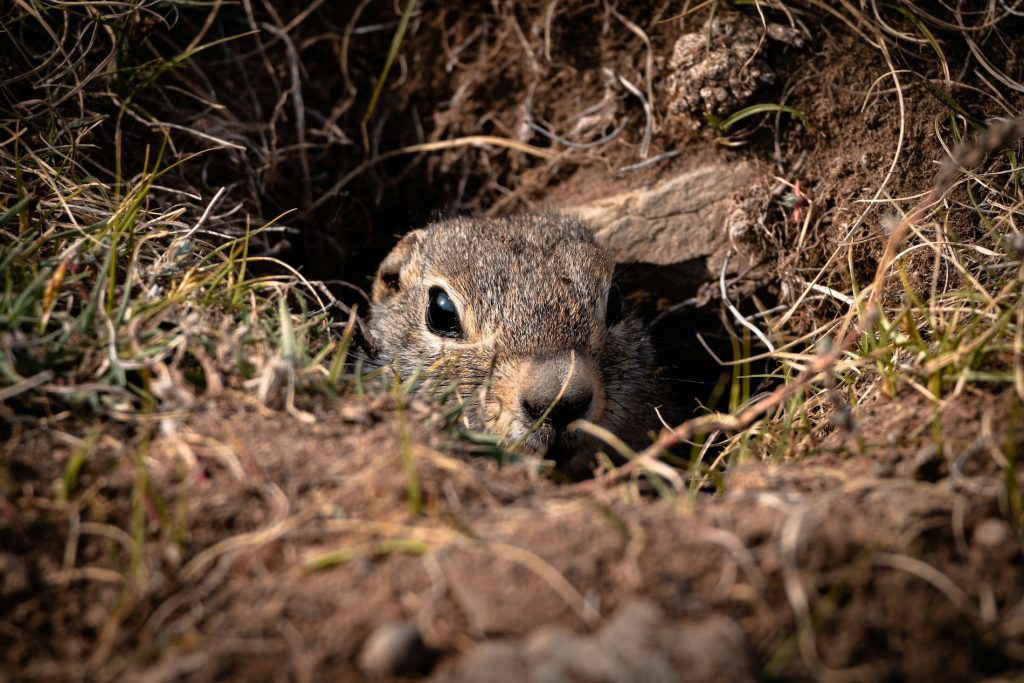I share some select product recommendations and this page contains affiliate links. If you take action (click on the link and purchase the product), I will earn some loose change. I hope you take advantage of my recommendations. You do not pay a higher price. – Jeffrey McLain
Gardening is a rewarding hobby, but it comes with its fair share of challenges, and one persistent nuisance for many gardeners is gophers. These small, burrowing rodents can wreak havoc on your vegetable patch, causing damage to roots and devouring your prized crops. However, fear not! With the right strategies and a bit of perseverance, you can effectively banish these rodents from your garden and protect your vegetables. In this blog post, we’ll explore some tried-and-tested methods to help you reclaim your garden from these pesky pests.
Identifying Pocket Gophers
The first step in addressing a gopher infestation is to accurately identify the signs of their presence. Look for fresh mounds of soil scattered throughout your garden, as these are telltale signs of gopher activity. Additionally, keep an eye out for chewed plants or vegetation that has been pulled underground, as these vermin are notorious for their voracious appetites.
Gophers dig extensive burrow systems underground, and as they excavate tunnels, they push soil to the surface, creating distinctive mounds of loose soil. These mounds often have a characteristic shape, resembling a horseshoe or crescent, with a plugged or partially open hole in the center. Mounds typically have fan-shaped piles of soil around the entrance hole. The shape is created as the gopher pushes soil out of the tunnel system, resulting in a fan-like pattern of dirt around the opening.
Holes usually have a plugged entrance, which the gopher uses to seal off the burrow system from predators and to maintain a stable temperature and humidity within the tunnels. The plug may consist of soil, vegetation, or other materials found in the surrounding area. In addition, holes are usually small and circular, with diameters ranging from 3 to 4 inches. The size of the hole may vary depending on the size of the gopher species and the age of the burrow.
Barriers and Exclusion
Another effective strategy for protecting your vegetable patch from vermin is to install physical barriers and exclusion methods. One popular option is to bury wire mesh or hardware cloth around the perimeter of your garden beds, extending it several inches below the surface to prevent vermin from burrowing underneath. Additionally, consider using raised beds with bottoms lined with wire mesh to deter rodents from tunneling up into your plants.
Traps and Repellents


For more immediate control of gopher populations, traps and repellents can be effective tools. There are various types of traps available, including box traps and spring-loaded traps, which can be baited with peanut butter or other enticing treats. Place traps near gopher mounds or along active tunnels for the best results. Alternatively, you can try using natural repellents such as castor oil-based products, which create an unpleasant environment for gophers and encourage them to seek out greener pastures.
My favorite traps is the GopherHawk. This nifty trap is inexpensive and is easy to use. You set it, put it in the ground, and wait for the gopher to get caught. It kills them instantly. No chemicals.
Cultural Practices
In addition to physical and chemical methods, adopting certain cultural practices can help deter gophers from taking up residence in your garden. Regularly mowing your lawn and keeping vegetation trimmed can make your garden less attractive to rodents by reducing cover and hiding spots. Furthermore, rotating your crops and practicing companion planting can disrupt gopher feeding patterns and make it harder for them to locate their favorite snacks.
Conclusion
Dealing with gophers in your vegetable garden can be frustrating, but with the right approach, you can reclaim your garden and protect your precious crops. Whether you opt for natural predators, physical barriers, traps, or repellents, there are plenty of strategies available to help you banish the rodents for good. By staying vigilant and implementing proactive measures, you can enjoy a bountiful harvest without the constant threat of gopher damage. Happy gardening!
Don’t forget to check out my book, Backyard Big: Growing Food in Your Backyard, and my Garden Blog for more information. This post is part of Jeffreymclain.com.


